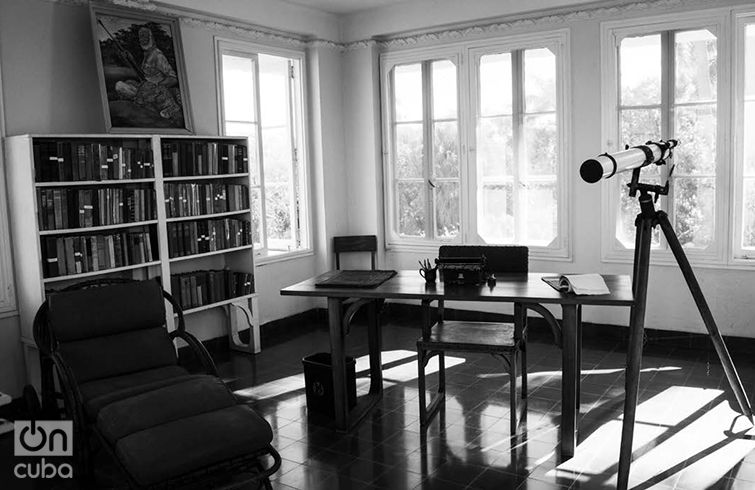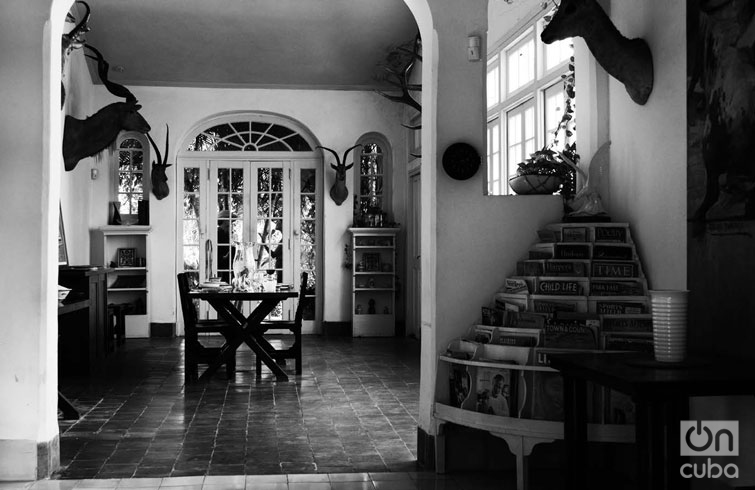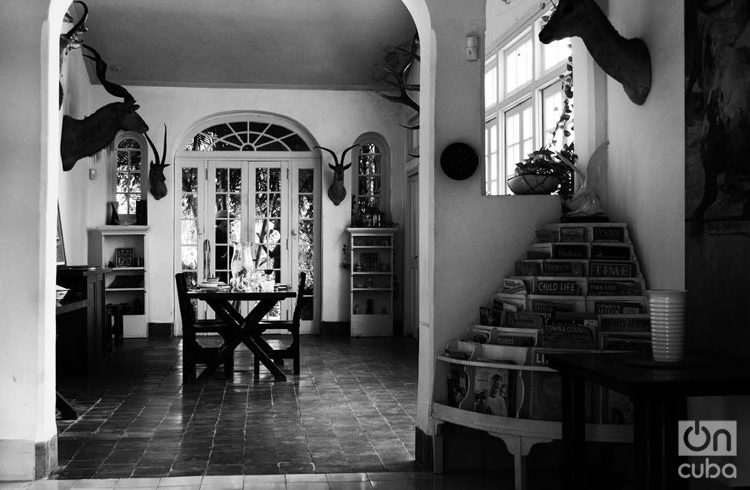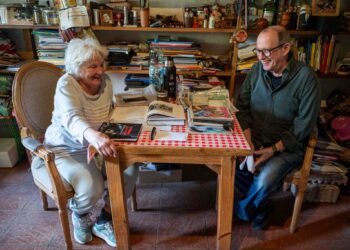When Ernest Hemingway arrived in Finca Vijía he was already well-known in Havana. The Ambos Mundos Hotel, El Floridita Bar and La Bodeguita del Medio formed part of his usual itinerary each time he arrived in Cuba.
His third wife, journalist Martha Gellhorn, found the estate, located on a hill in San Francisco de Paula, on the outskirts of the city, and for Hemingway it seemed ideal for the life he wanted.
The writer would justify his enchantment by saying that it was because to go into the city he only had to put on his shoes, because he could cover the telephone’s ring with paper to avoid any calls and because during the morning breeze he worked better and more comfortably than in any other place.
The couple rented Finca Vigía in 1939 and a year later bought the property. Hemingway, who still hadn’t won the Pulitzer Prize or published several of his most recognized works, would turn the place into a sanctuary for his writing.
Every morning, while there was silence in the entire house, he would write on his typewriter, standing up and barefoot over a rug made from the leather of a kudu hunted during a safari through Africa. There, works like For Whom the Bell Tolls, A Movable Feast, Islands in the Stream, The Old Man and the Sea… would be partially or completely born.
His children and friends, celebrities like Errol Flynn, Gary Cooper, Spencer Tracy and Marlene Dietrich would also go there, and from there he would go to the nearby town of Cojímar to meet with his old friends the fishermen, and go out fishing in the Gulf Stream, “the Great Blue River,” on his famous yacht Pilar.
During the following 20 years after his arrival in Finca Vigía, Hemingway would change wives, would travel the world, would participate in World War II and would win the Nobel Prize for Literature. But he wouldn’t leave his Havana paradise.
And although he left Cuba for good in 1960 and a year later died in Idaho from a shot that came from his own rifle, Papa – as he was called on the island – had no other more stable residence in his life than the San Francisco de Paula mansion.
On the outskirts of Havana

Until the late 19th century a Spanish army watch tower was located where Finca Vigía stands today, some 15 kilometers from downtown Havana. It takes its name from what the place was used for (vigía, meaning watchtower in English).
In 1887 the place passed on to Catalonian architect Miguel Pascual Baguer, who built there the spacious home. Afterwards it would have several owners until it got to French Joseph D’Orn Duchamp, from whom Hemingway and Martha Gellhorn first rented and later bought it in 1940.
After the writer’s death, the place was turned into a museum. Following Hemingway’s will, his fourth wife, Mary Welsh, returned to the island to pick up the manuscripts and the works of art, and donated to the Cuban government the place with the rest of his belongings, among them the furniture, books and hunting trophies.
The museum, which bears the name of the famous novelist but which everyone continues calling Finca Vigía, opened its doors in July 1962, barely a year after Hemingway’s suicide.
With 4.3 hectares, the estate has much more to show to visitors. The mansion, surrounded by terraces that facilitate communication with the rooms, is the principal attraction.
Peeking in its doors and windows is like traveling in time. Everything is conserved as the writer left it, as if waiting for his return. It contains his more than 9,000 books and magazines, the typewriter that was so close to him, his paintings with bullfighting motifs, the heads of buffalos and antelopes which he hunted, his knife collection.
The scale where he weighed himself every day continues in the bathroom; in the dining room, his jugs and Venetian decorations; and in the living room, a gramophone with the record of Glenn Miller he liked to listen to so much.
On one side of the house is the bungalow which Mary Welsh decorated for her husband’s children and which is now waiting to be restored. On the other side, the 12-meter-high tower built in 1947 and where Hemingway never got to write because he was distracted by the view of Havana on the horizon.
Beyond the house

Palms, fruit trees and other plants surround the mansion and make the visit even more agreeable. The site was affected by Hurricane Irma in September 2017 but, although the vegetation still shows signs of this, it was possible to reopen it in just two months.
Coming down from the house, located on the highest point of the hill, a path leads to the swimming pool, today empty, in which Hemingway used to swim half a mile when he finished writing. According to stories, the statuesque Ava Gardner swam in it naked.
Very nearby, in what in its time was a tennis court, rests the yacht Pilar with the Cuban and U.S. flags. Built with American black oak, on it Hemingway carried out his legendary fishing trips and chased after German submarines around the island.
Four of the dogs the novelist had on the estate also rest there, a love inherited by the museum workers, who keep several dogs as pets. However, there are no descendants of the more than 50 cats that got to live in the house under the protection of the writer and his wife.
Every day, hundreds of visitors go to Finca Vigía, many of them foreigners. For the Americans who travel to the island despite Washington’s legal impediments, it is almost an obligatory visit and the cruise ships include the place among their itineraries in Havana.
There they are attended by custodians, like the experienced María Elena Otero, with more than two decades in the museum, who explain to them about Hemingway’s life and take care for the treasure the U.S. Nobel prizewinner bequeathed to Cuba. A treasure that Finca Vigía proudly exhibits in the midst of the paradisiacal landscape which already charmed the writer more than half a century ago.










FINCA VIGÍA is one (1) of the 101 places to visit in the newly released book, CUBA: 101 BEAUTIFUL & NOSTALGIC PLACES TO VISIT.